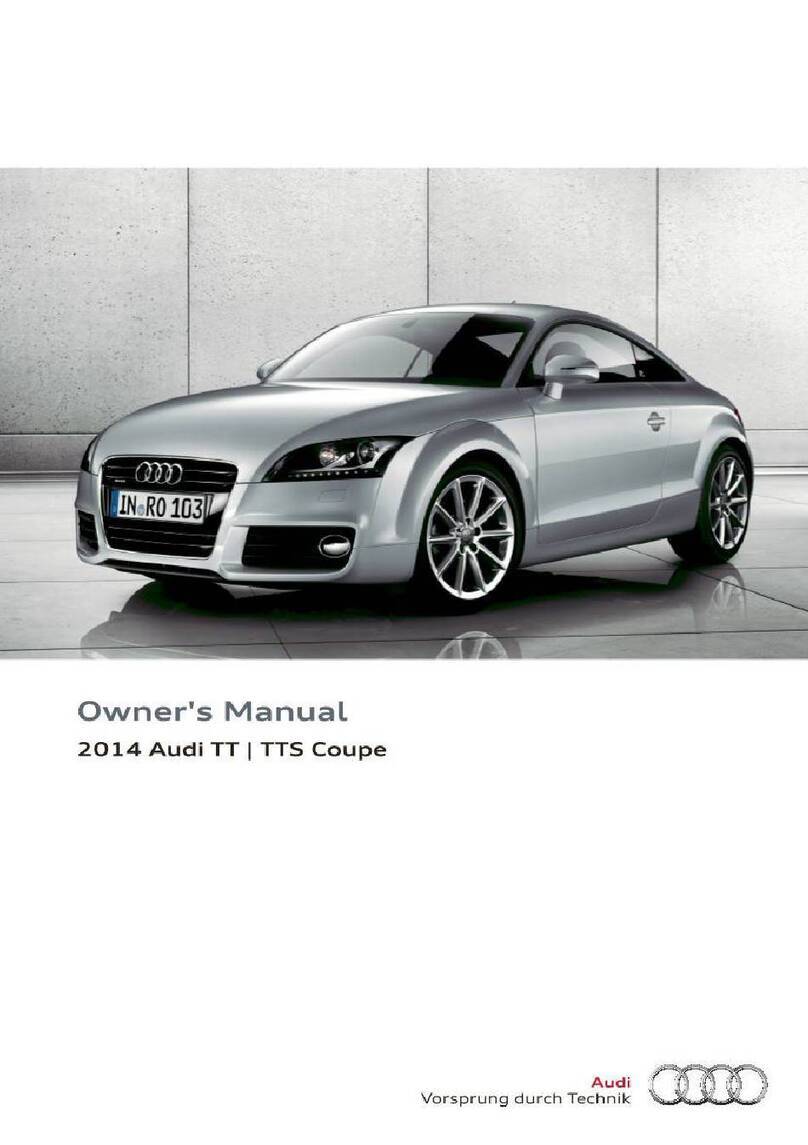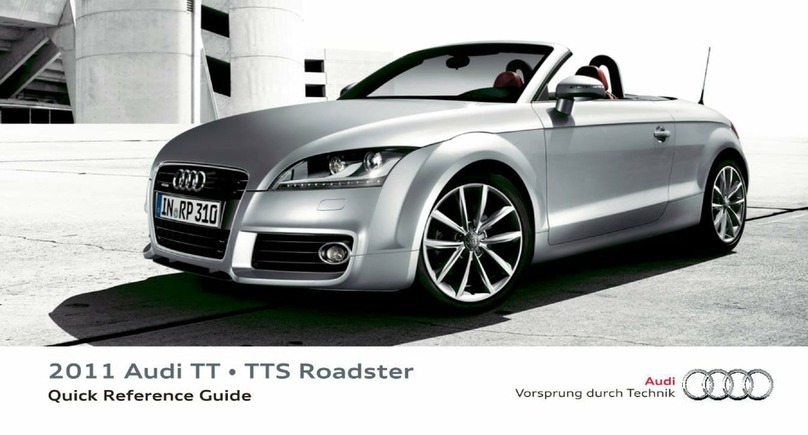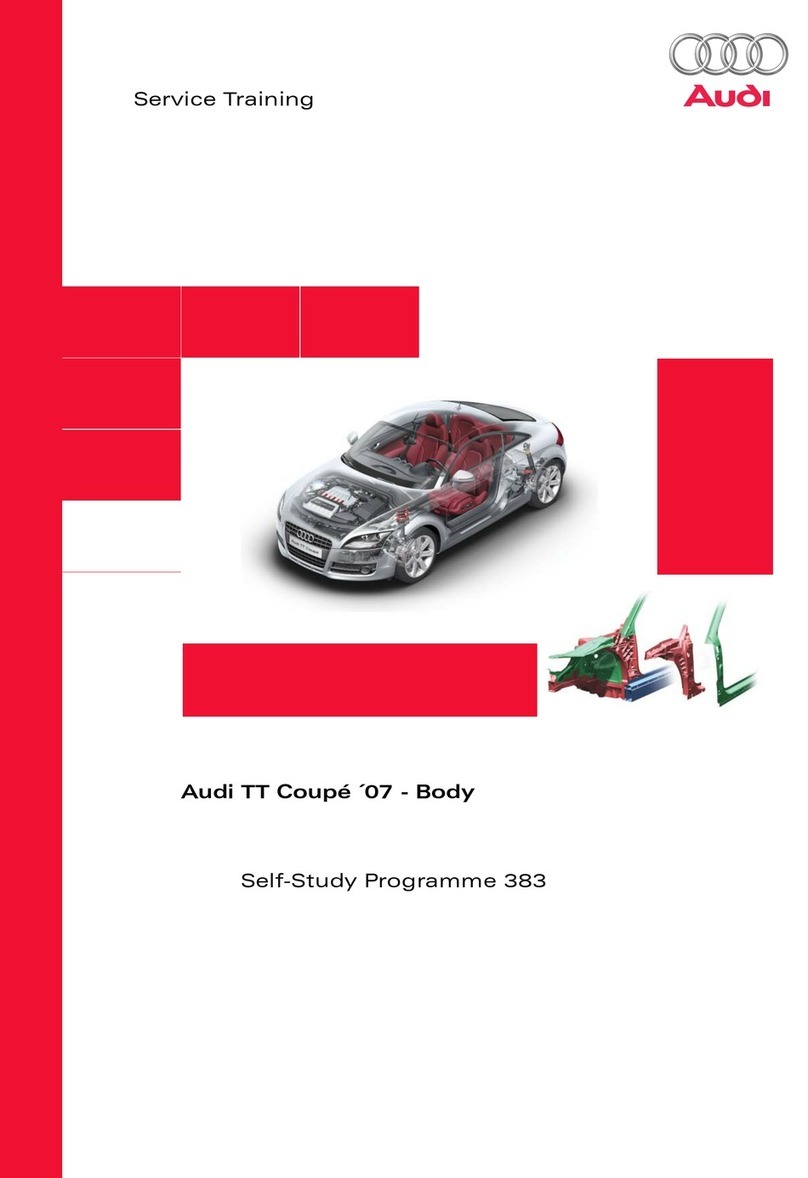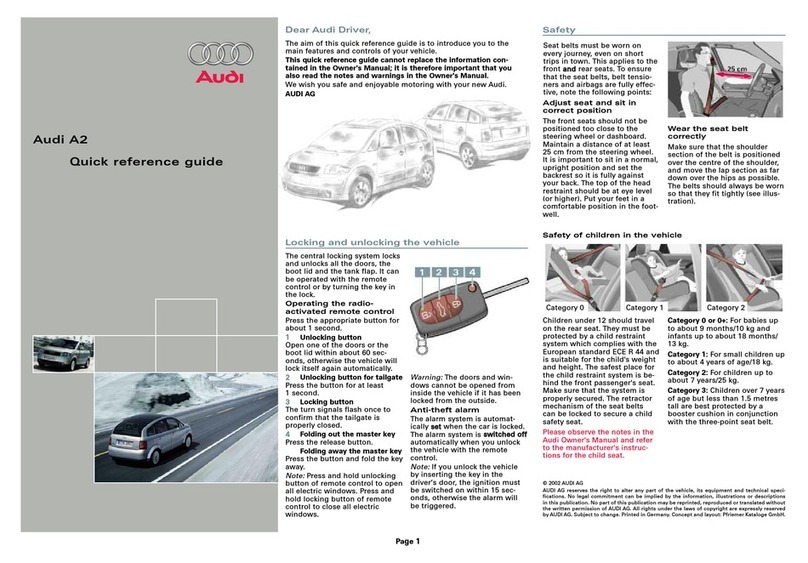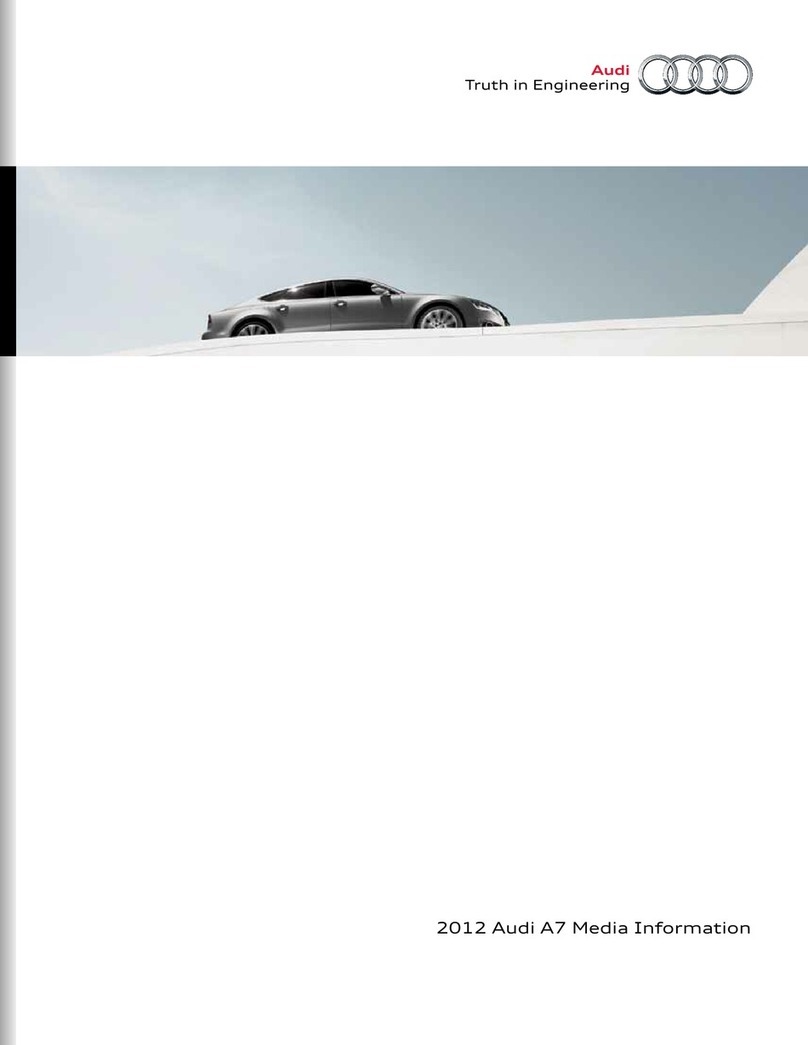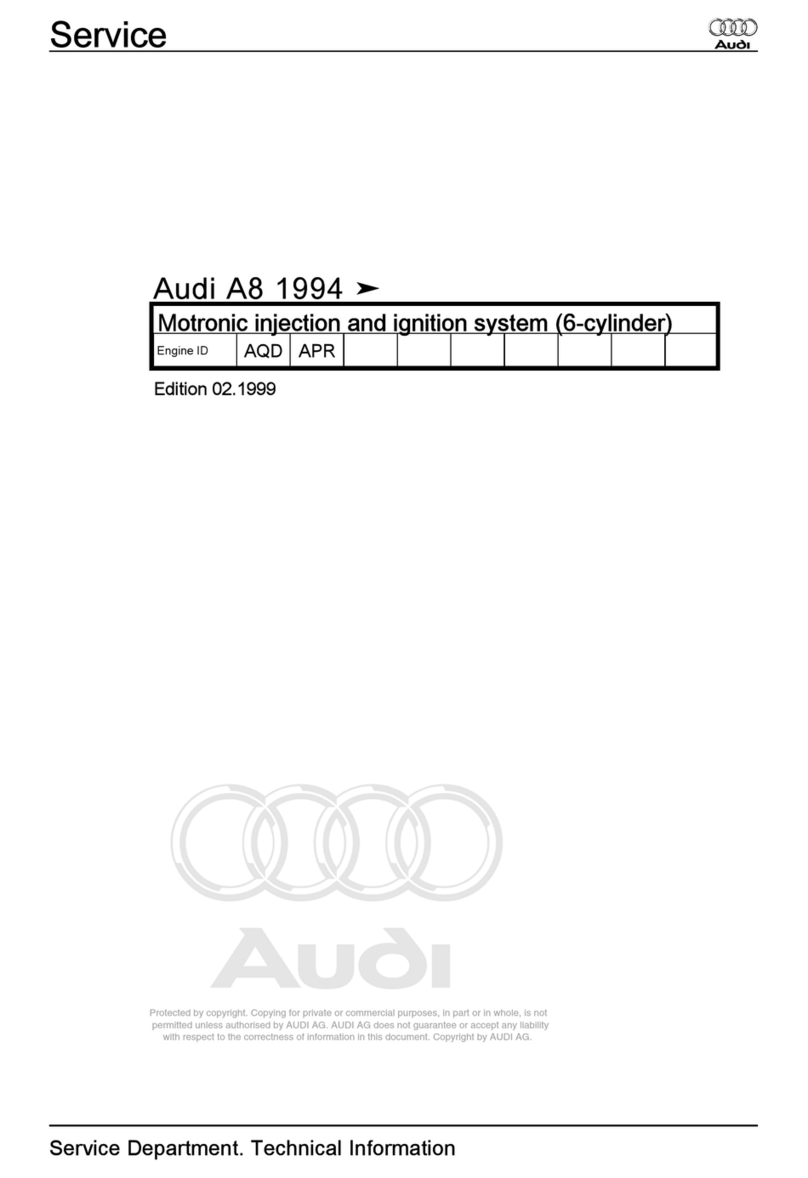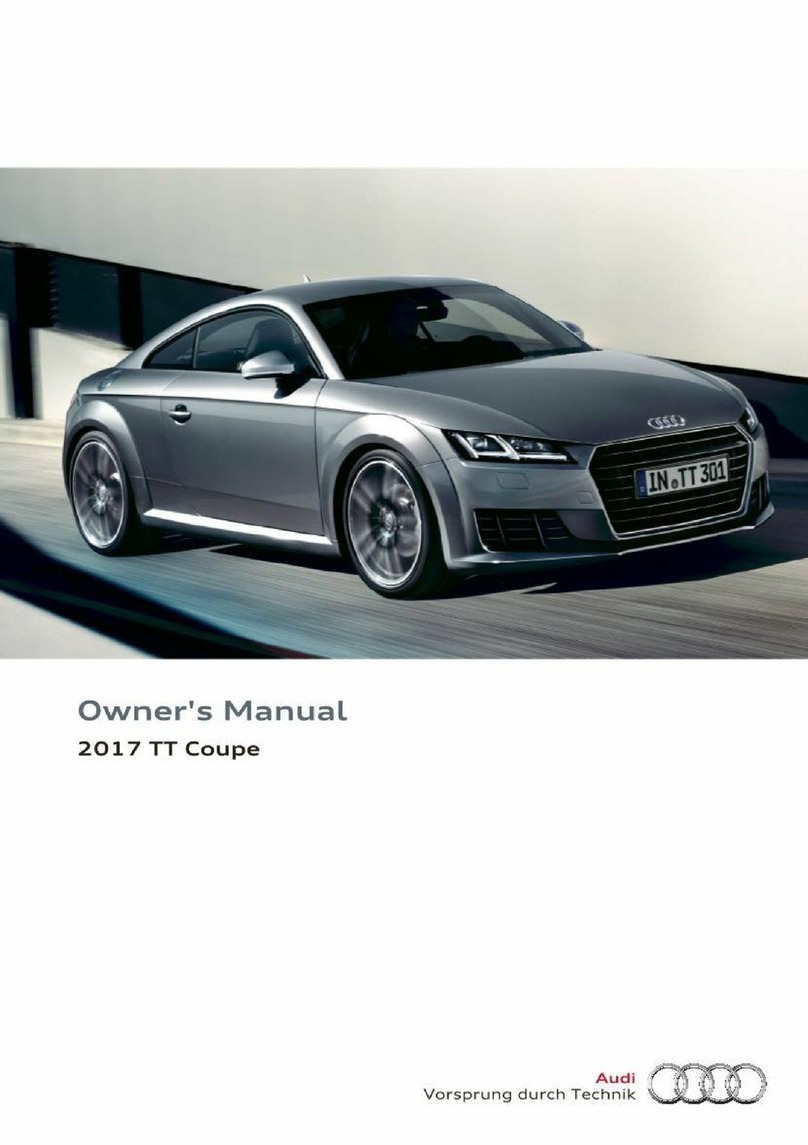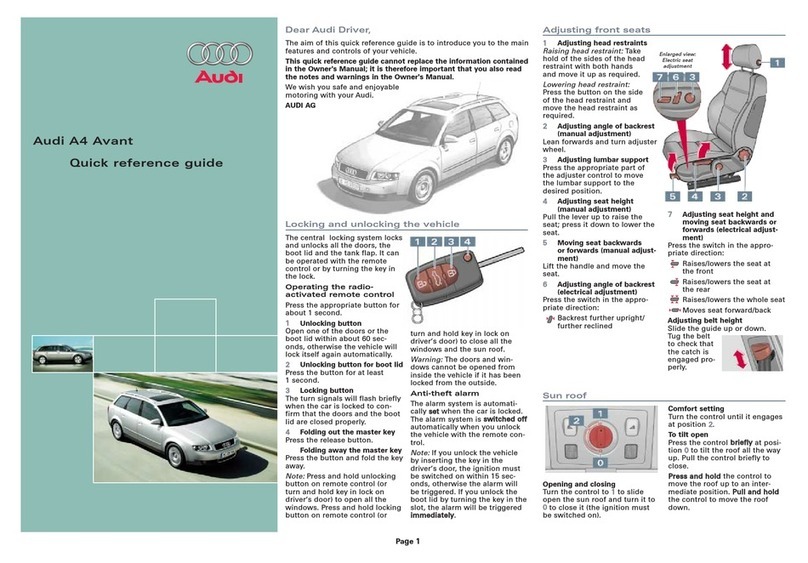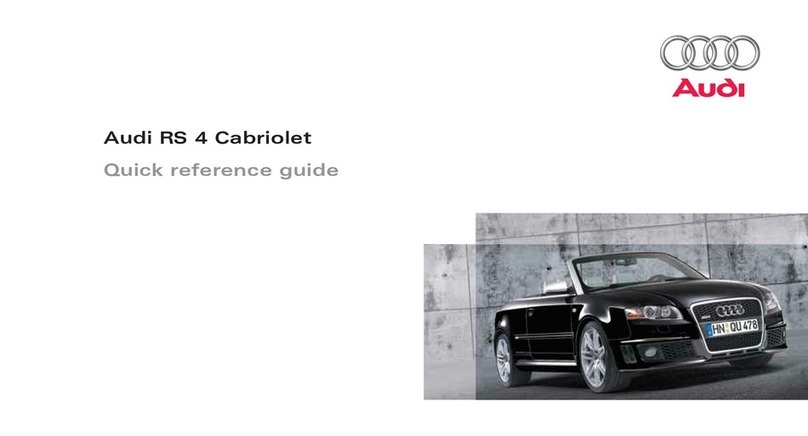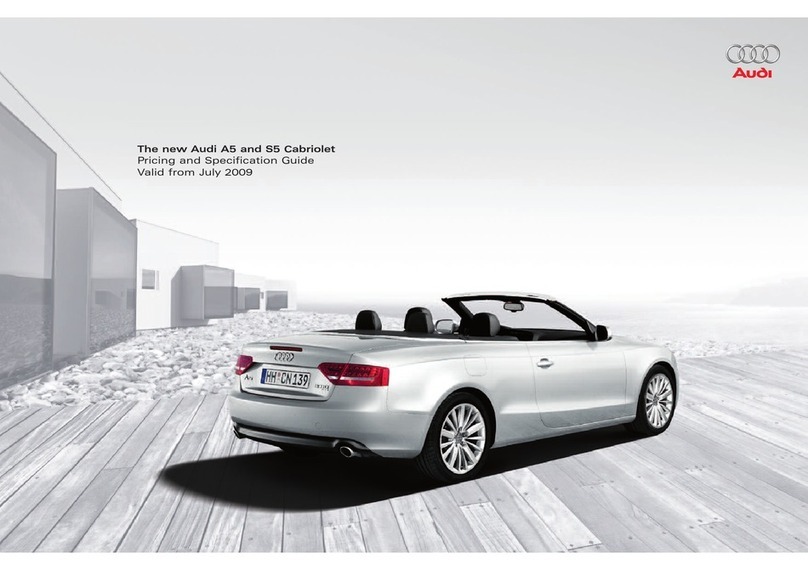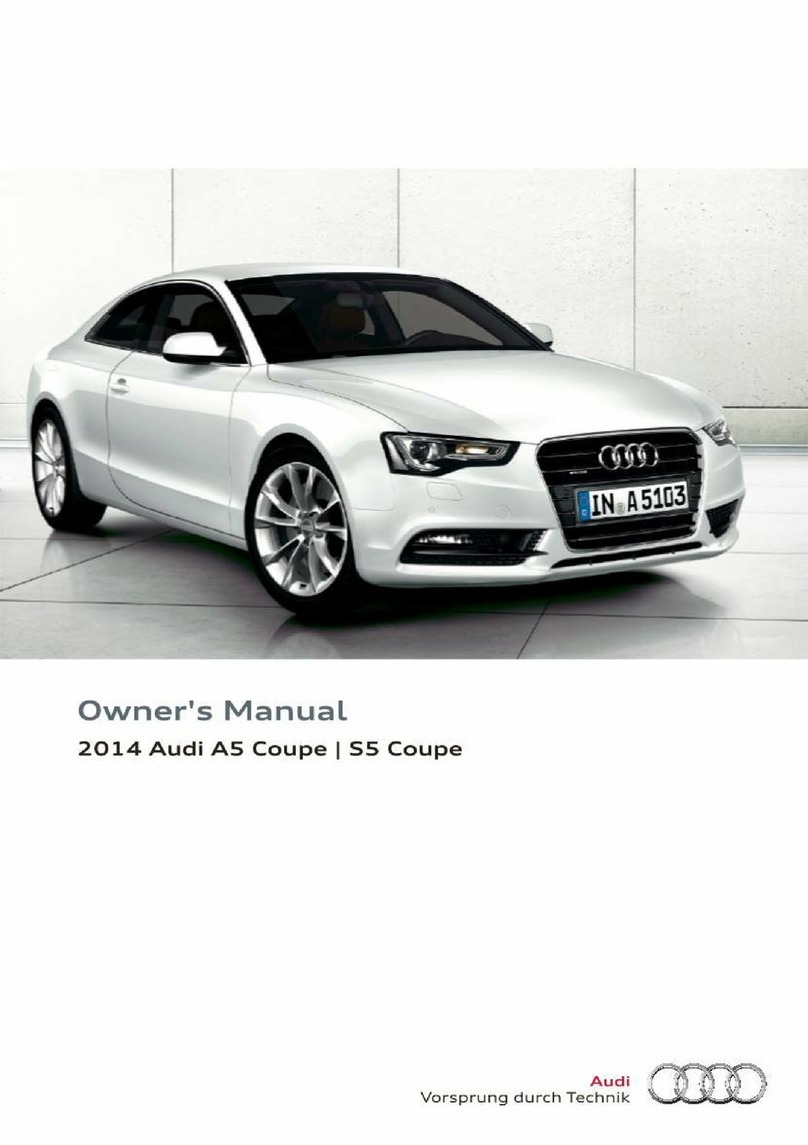
7
Additional equipment
Equipment specifications can vary due to the dierent require-
ments and statutory provisions for car makers in the various
markets.
Key to figure on page6:
E24 Driver side seat belt switch
E25 Front pass. side seat belt switch
E224 Airbag disabling switch, front passenger side
F390 Driver side seat belt switch, 2nd seat row
F391 Centre belt switch, 2nd seat row
F392 Front pass. side seat belt switch, 2nd seat row
F393 Driver side seat belt switch, 3rd seat row
F395 Front pass. side seat belt switch, 3rd seat row
G128 Passenger side seat occupancy sensor
G179 Side airbag crash sensor, driver side
G180 Side airbag crash sensor, front passenger side
G256 Rear side airbag crash sensor, driver side
G257 Rear side airbag crash sensor, passenger side
G283 Front airbag crash sensor, driver side
G284 Front airbag crash sensor, front passenger side
G551 Belt force limiter, driver side
G552 Belt force limiter, front passenger side
G553 Seat position sensor, driver side
G554 Seat position sensor, front passenger side
G598 Pedestrian protection trigger 1
G599 Pedestrian protection trigger 2
G693 Pedestrian protection crash sensor, centre
G851 Driver side crash sensor for pedestrian protection 2
G852 Passenger side crash sensor for pedestrian protection 2
G858 Centre crash sensor for X/Y axis
J234 Airbag control unit
J285 Control unit in dash panel insert
J533 Data bus diagnostic interface (gateway)
J706 Seat occupancy recognition control unit
J854 Front left seat belt tensioner control unit
J855 Front right seat belt tensioner control unit
K19 Seat belt reminder warning lamp
K75 Airbag warning lamp
K145 Front pass. airbag OFF warning lamp (ON and OFF status of
the front passenger airbag is indicated)
N95 Driver side airbag igniter
N131 Front pass. side airbag igniter 1
N132 Front pass. side airbag igniter 2
N153 Seat belt tensioner igniter 1, driver side
N154 Seat belt tensioner igniter 1, front passenger side
N196 Rear seat belt tensioner igniter, driver side
N197 Rear seat belt tensioner igniter, front passenger side
N199 Side airbag igniter, driver side
N200 Side airbag igniter, front passenger side
N201 Rear side airbag igniter, driver side
N202 Rear side airbag igniter, passenger side
N251 Head airbag igniter, driver side
N252 Head airbag igniter, front passenger side
N253 Battery isolation igniter
N297 Seat belt tensioner igniter 2, driver side
(lap belt tensioner)
N298 Seat belt tensioner igniter 2, passenger
side (lap belt tensioner)
N490 Driver airbag relief valve igniter
N491 Front pass. airbag relief valve igniter
N668 Driver side seat belt tensioner igniter, 3rd seat row
N669 Front pass. side seat belt tensioner igniter, 3rd seat row
T16 16-pin connector, diagnostic port
